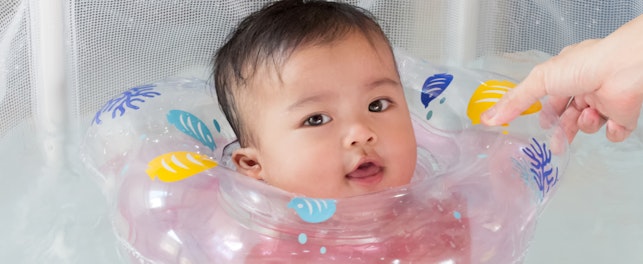SG 69/23
Washington State’s Department of Ecology has adopted a rule which creates reporting requirements and restrictions for ten priority products.
The Safer Products for Washington program (RCW 70A.350), signed into law in May 2019, was designed to reduce toxic chemicals in consumer products in order to protect people, the environment and sensitive populations and species. It is structured in four phases in which the Washington State’s Department of Ecology (DoE) is tasked with (1) prioritizing chemical classes, (2) prioritizing consumer products, (3) determining potential regulatory actions and (4) rulemaking. On May 31, 2023, the DoE finished its first cycle by adopting Chapter 173-133 WAC – Safer Products Restrictions and Reporting. This final rule is the result of the preliminary draft rule released on August 9, 2022 (SG 104.22), and the proposed formal draft rule released in December 2022.
The rule creates reporting requirements and restrictions for manufacturers, distributors and retailers of various priority products containing certain priority chemicals. The priority chemicals include perfluoroalkyl and polyfluoroalkyl substances (PFAS), ortho-phthalates, flame retardants, alkylphenol ethoxylates and bisphenols. The priority products covered include electronics, food and drink cans, laundry detergent and furnishings. Tables 1 to 5 summarize the detailed provisions as outlined in the final rule.
The final rule’s main framework is consistent with the preliminary and proposed formal draft rule. Most of the changes aim to improve clarity and alignment with the underlying statute. Highlights of other changes include:
- Making reporting timelines clearer
- Adding one year to compliance deadlines for non-TV electronics
- Adding one year to compliance deadline for bisphenols in thermal paper
- Adding IPTPP to the list of organophosphate flame retardants restricted or requiring reporting for polyurethane foam
- Extending the application of rebuttable presumptions to most of the priority chemical/priority product combinations
- Moving away from some concentration limits to generic restrictions on intentionally added substances, while integrating the concentration limits into the rebuttable presumptions
- Allowing refurbishment of products and replacement parts manufactured before effective date
- Changing definition of ‘electronic display’ to better align with New York’s definition
Following the draft rules, the final rule sets out the concept of rebuttable presumptions. In cases where a restriction would apply to the intentional use of a chemical or chemical class, the DoE would presume the presence of those chemicals based on either their detection, or the detection of an associated sub-component, within the respective product. For example, a detectable total fluorine content would lead the DoE to presume PFAS use. The manufacturer could rebut this presumption by providing a statement to the DoE including supporting information that documents chemical content coming from a source other than the restricted substance(s).
The rule will go into effect on July 1, 2023. The completion of the rule marks the end of the first cycle and the start of a new one with the DoE planning to soon publish a draft identifying priority chemicals for cycle 2.
173-337 WAC: PFAS reporting requirements and restrictions
| Product | Effective date | Requirement |
|---|---|---|
| Aftermarket stain- and water-resistance treatments | January 1, 2025 |
|
| Carpets and rugs | January 1, 2025 |
|
| Leather and textile furniture and furnishings intended for indoor use | January 1, 2026 |
|
| Leather and textile furniture and furnishings intended for outdoor use | January 1, 2024 |
|
1The Department of Ecology presumes the detection of total fluorine indicates the intentional addition of PFAS
Table 1
173-337 WAC: Ortho-phthalates reporting requirements and restrictions
| Product | Effective date | Requirement |
|---|---|---|
| Fragrances in beauty products and personal care products | January 1, 2025 |
|
| Vinyl flooring | January 1, 2025 |
|
1 The Department of Ecology presumes the detection of ortho-phthalates not listed in the ingredients, indicates the intentional addition of ortho-phthalates as solvents or fixatives for fragrance ingredients
Table 2
173-337 WAC: Flame retardants reporting requirements and restrictions
| Product | Effective date | Requirement |
|---|---|---|
| Electric and electronic products with plastic external enclosures, intended for indoor use | January 1, 2025 (TVs and electronic displays) January 1, 2027 (large businesses, not TVs or displays) January 1, 2028 (small businesses, not TVs or displays) |
|
| Electric and electronic products with plastic external enclosures, intended for outdoor use | January 1, 2024 |
|
| Recreational covered wall padding made from polyurethane foam | January 1, 2024 |
|
| Other recreational products made from polyurethane foam | January 1, 2025 |
|
1 The Department of Ecology presumes that the detection of (A) total bromine concentrations above 1,000 ppm in the homogenous material indicate intentionally added organohalogen flame retardants, (B) total chlorine concentrations above 1,000 ppm in the homogenous material indicate concentrations of intentionally added organohalogen flame retardants above and (C) total fluorine concentrations above 1,000 ppm with less than 5,000 ppm total phosphorus in the homogeneous material indicate intentionally added organohalogen flame retardants
2 The Department of Ecology presumes the detection of (A) total bromine concentrations above 1,000 ppm in the homogenous material indicate concentrations of intentionally added organohalogen flame retardants, (B) total chlorine concentrations above 1,000 ppm in the homogenous material indicate concentrations of intentionally added organohalogen flame retardants, (C) total fluorine concentrations above 1,000 ppm in the homogenous material indicate concentrations of organohalogen flame retardants and (D) listed organophosphate flame retardants (individual or combined) at concentrations above 1,000 ppm in the homogeneous material indicate intentionally added organophosphate flame retardants
Table 3
173-337 WAC: Alkylphenol ethoxylates restrictions
| Product | Effective date | Requirement |
|---|---|---|
| Laundry detergent | January 1, 2025 |
|
Table 4
173-337 WAC: Bisphenols reporting requirements and restrictions
| Product | Effective date | Requirement |
|---|---|---|
| Drink cans | January 1, 2025 |
|
| Food cans | January 1, 2024 |
|
| Thermal paper | January 1, 2026 |
|
1 The Department of Ecology presumes the detection of a bisphenol, excluding TMBPF, indicates a bisphenol-based epoxy can liner
2 The Department of Ecology presumes the detection of bisphenol concentrations above 200 ppm indicate intentionally added bisphenols
Table 5
Abbreviations
| Abbreviation | Flame Retardant | CAS |
|---|---|---|
| EHDPP | Ethylhexyl diphenyl phosphate | 1241-94-7 |
| IPTPP | Isopropylated triphenyl phosphate | 68937-41-7 |
| TNBP | Tributyl phosphate | 126-73-8 |
| TCP | Triorthocresyl phosphate | 1330-78-5 |
| TPP | Triphenyl phosphate | 115-86-6 |
With facilities accredited to ISO, Australian, European and US standards, and experts covering every region of the globe, SGS is the number one choice for accurate, innovative solutions to PFAS testing. Whether you require rapid turnaround times, short-list remediation analysis or wider investigations of tissue and serum matrices, we have the capabilities to ensure your project is accurately and efficiently completed. Contact us for more information on PFAS testing or visit our website. In the end, it’s only trusted because it’s tested.
© SGS Société Générale de Surveillance SA. This publication or website is a property of SGS Société Générale de Surveillance SA. All contents including website designs, text, and graphics contained herein are owned by or licensed to SGS Société Générale de Surveillance SA. The information provided is for technical and general information purposes only and offers no legal advice. The information is no substitute for professional legal advice to ensure compliance with the applicable laws and regulations. All information is provided in good faith “as is”, and SGS Société Générale de Surveillance SA makes no representation or warranty of any kind, express or implied, and does not warrant that the information will be error-free or meet any particular criteria of performance or quality.





